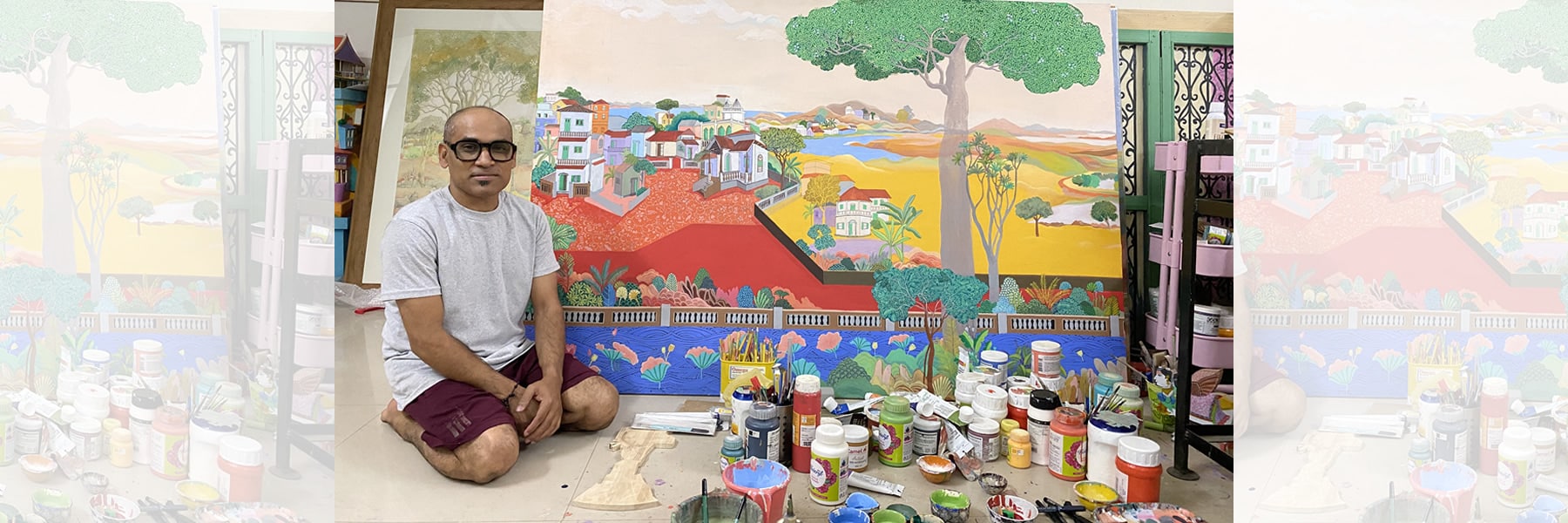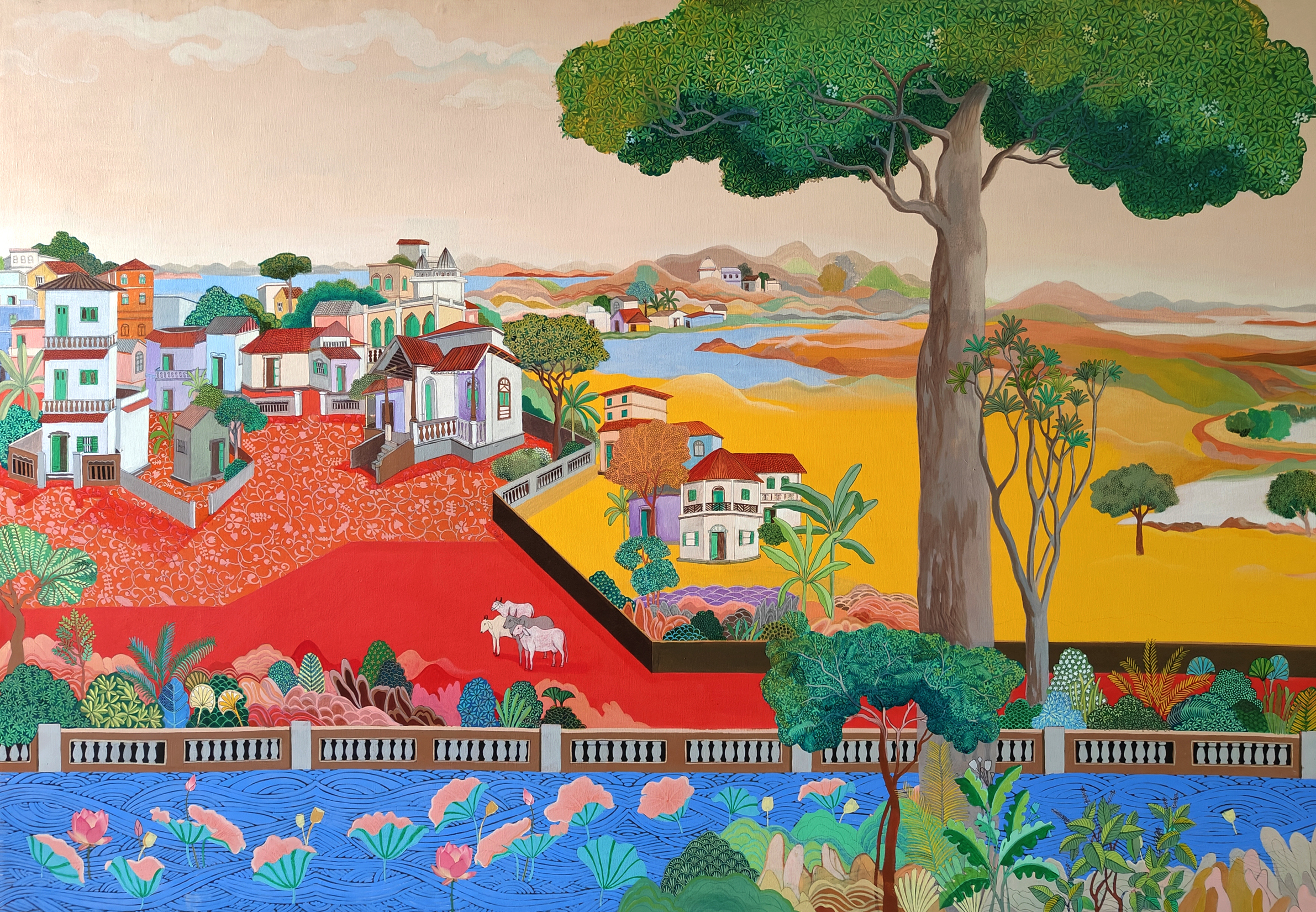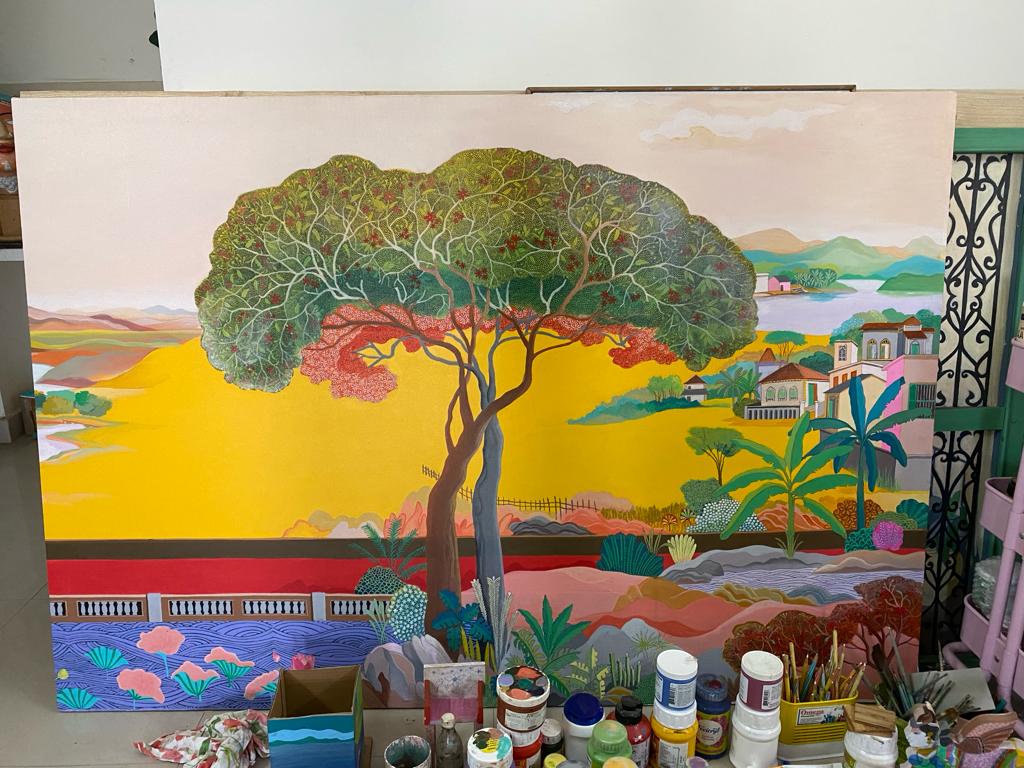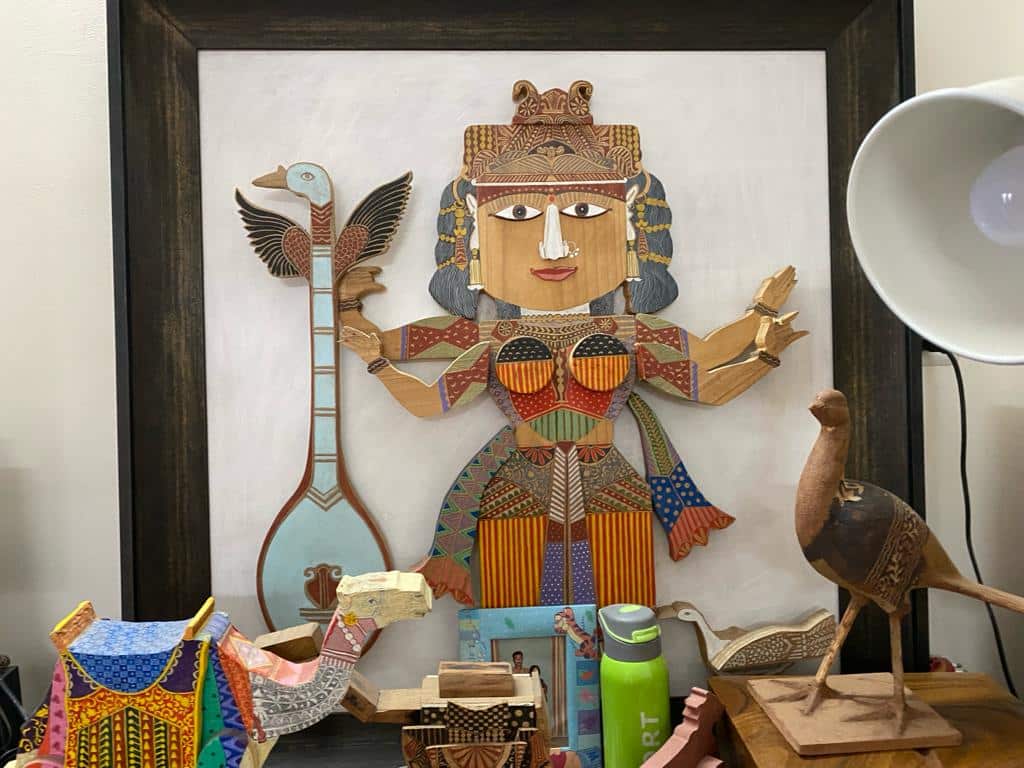
INTERVIEW WITH CONTEMPORARY ARTIST SUMANTO CHOWDHURY
I first came across the charming, vibrant landscapes of artist Sumanto Chowdhury by coincidence, during one of my trips to India. His paintings have a dreamlike quality that invites the viewer into another world where time has stood still, filled with lush gardens, auto rickshaws and young couples riding on scooters. Right away, I was impressed by Sumanto’s use of miniature painting techniques as well as his use of mixed media, like layering wood on paper to create a three-dimensional effect. I also admired the way he explores the theme of India’s unique architecture and nature across paintings, sculptures, lithographs and etchings, and I am delighted to share his work through Laasya Art now.
In this recent interview, Sumanto spoke with respected art historian and writer Sandhya Bordewekar about his inspiration, the rigors of printmaking and his approach to mixed media.

Sumanto, tell us about your early years.
I was born in West Bengal. When I was small, I was fascinated by my older brother who drew quite well. At school, I began to take drawing lessons from a teacher by the name of Chandan Das. I started doing watercolors and an opaque style of painting popularized by Nandalal Bose.
Later, when I decided to complete high school at Santiniketan and then attend the art school, my parents supported my decision. My grandfather encouraged me a lot too. He was a self-taught artist who made portraits as a hobby, often painting people at his workplace. I used to love looking at these portraits — sometimes I tried to copy them! No one from our family had become an artist, so he wanted me to become one.
After I finished high school, I applied for admission to the art school but did not get in for two years. I continued to stay in Santiniketan and train under one of my teachers, Suhas Roy. He introduced me to many mediums, and I worked hard to sharpen my technical skills. I would often tag along with the first-year students when they went for their outdoor sketching exercises. That helped me tremendously. Finally, I got admission to Santiniketan in 1999!
What was your experience at Santiniketan like? Were there any teachers who took you under their wing?
I made the most of all the opportunities at Santiniketan. When I was in my final year of my painting specialization, the artist and printmaker Rini Dhumal from Baroda came to Santiniketan for six months. She advised me to go to Baroda to do my post-graduation and guided me on the kind of preparations I needed to make. Pinaki Barua, who taught Printmaking, was of the opinion that I must move out of West Bengal, and he suggested Hyderabad as very talented printmakers like Laxma Goud and DLN Reddy were teaching there. Discussions with both these senior artists convinced me that it was important for me to spread my wings and explore the world beyond Santiniketan.
That was a major turning point in my life. I was admitted to the S.N. School of Art at Central University in Hyderabad. I enrolled in the two-year Master’s program in Printmaking, where artists DLN Reddy and Shyam Sundar were still teaching.

Did moving to Hyderabad help you in maturing as an artist?
Oh yes. Printmaking is an exacting form — each line, every curve has to be perfectly done. That attention to detail helped me in my painting, too. The Master’s program was very rigorous.
After I finished studies, I got a job as a 3-D artist in an animation company in Hyderabad. That helped me stay in the city, which I had come to like quite a lot.
Then, it was Laxma Goud who advised me to concentrate on printmaking. I told him I did not have access to a printmaking studio. So he said, come to my studio tomorrow. He was so surprised when I actually turned up that he got a bit confused. But he said, “I need to test you. Here, take a print from this plate.” It was a challenging print. I did it with great care, and he loved it! I continued my job at the animation company for seven years before I could afford to devote my attention full-time to my studio.
From amongst the contemporary artists, whose works are you impressed by?
Sudhir Patwardhan’s landscapes — I am impressed with the way he composes them with great attention to the play on perspective. I also love the colors that Bhupen Khakhar uses, the forms of his buildings. And, of course, Laxma Goud.

Your paintings generally depict an idyllic version of suburban India. Can you tell us how you came upon this subject, and what continues to compel you to it?
The outdoors fascinate me. When I was young, I loved the outskirts of my hometown, lush with fields, lakes, large trees and palms. The journey from there to Santiniketan was wonderful, as I looked out of the window at the passing rural landscapes.
My inspiration comes from Indian miniatures, which depict nature in a stylized and visually delightful way. I like bright, fresh colors. They make the painting attractive to the viewer. They radiate a positive aura. My palette is rarely dull or dark.
Sometimes I work in wood, especially making images of gods and goddesses. I have grown up with images of Ganesha, Durga and Saraswati. I make a new Ganesha and Durga for their festivals every year.

Are there any themes or mediums you would like to explore in the future?
My dream is to refine my landscapes further. I keep working at it. I use a lot of color pencils and experiment with different mediums to get the exact effect that I want. I also love to work with ceramics — I like the feel of clay in my hands.
Which medium do you most enjoy working in?
I like working in all mediums. Waterproof paints, watercolors, color pencils… I especially love the mixed media combo!
If not an artist, what would you have become?
This is my life. I cannot imagine it being any other way. If you insist, maybe I would work at the animation company!
What would be your advice to young artists these days?
Young artists need to experiment with different kinds of mediums, as well as different kinds of expression. Only then will they know what gives them the most enjoyment and satisfaction.
Thank you so much, Sumanto.
To browse our curated collection of contemporary paintings by Indian artist Sumanto Chowdhury, visit https://laasyaart.com/sumanto-chowdhury/. If you would like to make an appointment to see these works in person at our Indian art gallery in Palo Alto, please reach out at info@laasyaart.com or +1 650-770-9088.
— Sonia Patwardhan

Leave a Reply
You must be logged in to post a comment.